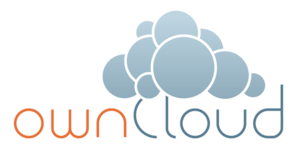ownCloud is a web-based file management and sharing solution that is made available by CAEDM for a user's own install and maintenance. Much like Dropbox, ownCloud enables users to upload files to a central server and share those files with other users. However, ownCloud is a local installation, and therefore benefits from the legal and technical security of the college itself, as opposed to that of a third party organization. Members of the college can set up ownCloud within their group Web Space. ownCloud files and settings are stored on Group Space and count against the quota for that group. Please note that CAEDM cannot provide support or resources for troubleshooting or installation of ownCloud besides the instructions and help in this wiki article.
Contents
Installing ownCloud
ownCloud is a browser-based application ("web app"). It is both used and managed via a web browser by accessing your group Web Space. Once it has been installed and set up, it is yours to maintain and use. To install ownCloud for your group:
- NOTICE: For security reasons, ownCloud should only be installed in a CAEDM groups webspace
- Make sure that your J Drive is mounted.
- Go to www.owncloud.org/install.
- Click "Download", and then click "Download ownCloud Server". Select the "Web Installer" tab.
- Right click "Download ownCloud Web Installer" and click "Save As". Save the file to your CAEDM group space /www/ directory.
- Access the ownCloud installer from your browser of choice. The URL will be (replacing GROUPNAME with your group name):
http://GROUPNAME.groups.et.byu.net/setup-owncloud.php
- If you are unable to access the installation page, verify that "setup-owncloud.php" file is in the /www/ folder on your group space.
- Once you're at the installation page, click next. Then, choose a folder to install ownCloud in (default is owncloud, which means /groupname/www/owncloud), and click next.
- Wait for the installation to complete (~5 minutes). When it finishes, click "Next" on the Success page.
- Now, create an admin account for ownCloud. Remember that ownCloud is independent of CAEDM, and this admin account will be independent of your existing CAEDM account.
Click "Finish Setup" (you can ignore the "Database and Storage" options)
Using ownCloud
ownCloud databases are made up of users and files. Individuals need an account to access anything from an ownCloud installation. Within a caedm user or group, the person who performed the installation creates the first user account: the admin account. This user is special in that it can create other ownCloud users and manage the installation in more advanced ways.
Users
ownCloud users are independent from CAEDM users--they must be created manually. As ownCloud administrator users, An ownCloud admin can create other users by accessing the "Users" item in the settings menu (the little gear in the bottom left corner). ownCloud users may be created as needed including individuals outside the university.
Files
ownCloud users can upload any file of reasonable size to an ownCloud installation using the "upload" button. Files uploaded count against the disk quota of the group who is hosting the ownCloud installation. Then, they can share that file with other users within their ownCloud group (or in the admin group) by clicking "share", which appears when you hover over the file's bar.
Groups
Like users, groups are specific to an ownCloud installation, and are not in any way related to CAEDM groups. ownCloud admins can create ownCloud groups and add ownCloud users to them from the Users page. Putting users in groups allows them to share files with eachother.
Good Practice and "Terms of Use"
ownCloud is not a CAEDM installation; ownCloud belongs to the user or group that installs it. During the installation process, as well as during user creation, ownCloud admins must create passwords for the installation. The installation is only as secure as the weakest password. If you use a dictionary word as your admin password, your information could very easily be compromised. Be careful who you give an account to, and be intelligent with password selection. Use capital letters, numbers, and symbols. Finally, keep yourself in the loop of all interactions on your ownCloud installation. Remember, files uploaded to ownCloud count against your group quota. ownCloud is a college resource for college communications, and it belongs and is maintained by you, the CAEDM user.
Mapping in Windows
The link below takes you to instructions on the ownCloud site on mapping drives to your ownCloud space. There appears to be some difficult in Windows7 as mentioned on their site. Using a product like NetDrive may be easier and more reliable in this instance for mapping the ownCloud space to a drive letter.



